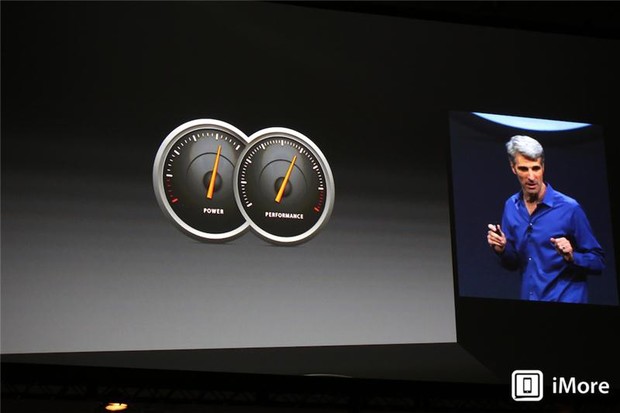How OS X Mavericks will save you power and boost performance

OS X Mavericks is the first OS X build to be named for something other than a big cat (Apple has run out of feline names, so they're switching to place names). it takes its name from a popular big wave surfing spot in northern California, not too far away from Apple's headquarters in Cupertino. And indeed, Mac users will be catching some big waves when Mavericks makes its way into the Mac App Store this fall.
Mavericks' claim to fame (the place, not the OS) is the giant waves it produces - 25 to 80 feet high, the biggest in California. They happen when the wind and the water interact with an unusual rocky reef formation under the surface.
Some of the most important changes to OS X Mavericks are also under the surface, where Apple has emphasized dramatically improved power and memory management. Apple sells more laptops than desktops, so it's no wonder the company wants to make Mavericks as thoroughly optimized as possible for the MacBook Air and Pro experience. But all users will benefit.
Sipping power without sacrificing horsepower
Timer Coalescing, App Nap, and Safari Power Saver are all new Mavericks features designed to extend battery life. Timer Coalescing enables the CPU to drop into low power mode more frequently, while App Nap intelligently observes what an app hidden behind other windows is doing. And if the app isn't running background tasks that need to stay active - playing music, for example, or processing data - App Nap slows it down, thus conserving juice. Similarly, Safari Power Saver helps to reduce Safari's power consumption by not loading cycle-sucking plug-in content until you actually want to watch or interact with it.
iTunes HD is another place in Mavericks where power reduction has been emphasized. The new version more efficiently uses the graphics hardware inside the Mac, reduces disk access and makes audio playback more energy-efficient - that adds up to up to 35 percent less waste than before when playing video, says Apple.
Jogging your Mac's memory
It's easy to open a bunch of apps and a bunch of windows without thinking about how that impacts your Mac's available memory. Mavericks introduces Compressed Memory - it compresses data from inactive apps, making more memory available when it's needed.
This reduces the size of swap files that need to be written out to disk when physical memory is short. Smaller swap files mean less disk access, which translates into improved performance. How improved? Apple is estimating that Maverick's responsiveness under load is about 1.4x better than Mountain Lion. Waking from Standby mode sees an even bigger benefit: 1.5x better than Mountain Lion.
iMore offers spot-on advice and guidance from our team of experts, with decades of Apple device experience to lean on. Learn more with iMore!
Some of these new technologies will require buy-in from developers to get the most benefit, so it's good that Apple's providing developer builds of Mavericks now and giving Mac devs time to optimize before the OS is released this fall. We'll all benefit from the changes once they're here.

